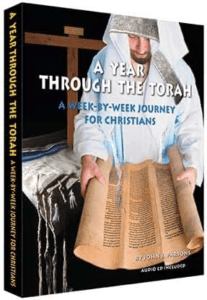
10 Ways to a More Biblical Faith Through Hebraic Roots
I hear from many of you who realize you want to pursue a more Biblically sound faith that you practice in your daily life. Through Bible study and spiritual growth, many of you have become convicted to deepen your faith and follow God in the way He desires. For some of you, it started with a need to keep the Sabbath, and others arrived here through a deeper understanding of the Bible through the Hebrew language.
However you arrived at this point, welcome! But I know it can be difficult at first. It’s confusing when you know you’re called to practice your faith differently, but you’re not sure how that’s even supposed to look!
The truth is that it will look different for everyone. How you practice your faith is between you and God, so please ensure you constantly communicate with Him as you make changes. Ensure you’re following His lead and not that of another person or your own will.
If He’s led you here for some info, I’ve made a list to answer the questions on this topic I get from Believers worldwide. In effect, they say, “I know God wants me to go down this path with my faith, but now what?! Where do I begin?”. If that’s you, here are ten things that may help you set off on the path of deepening your faith through Hebraic Roots.
- Get a New Bible
There’s a lot of debate among Christians about which Bible translation is best. But if your goal is to grow your faith into a more Biblically-aligned faith, you’ll be in the market for a Bible that’s translated as literally as possible or retains references to the Biblical culture of the time. There are a few like this, with translation being less paraphrasing and more this-word-equals-that-word kind of thing. The ones I suggest below have even kept some of the original Hebrew words that may lose some meaning by being translated into English. Here are a few great options:
- Tree of Life (the most beginner-friendly option)
- The Scriptures (most literal translation of those I recommend)
- Complete Jewish Bible (most Jewish roots-friendly version)
- Cultural Backgrounds Study Bible (contains many helpful pictures and diagrams, available in different Bible versions)
2. Find A Community
Finding a community is easier in some areas but is necessary as we’re not meant to practice our faith alone! To find a congregation in your area or an online community, check out How to Find a Hebraic Congregation.
It’s important to realize that the community you find may worship very differently than the traditional Christian church you’re used to. Although each congregation differs, here’s what you can expect at a Messianic Synagogue.
3. Learn About the Holy Days
Returning to a more Biblical faith includes celebrating the holidays in the Bible. In Leviticus 23, God set the Holy Days for His people to observe. Aside from being a way to connect with God in the way He desires, it’s interesting to see how all of the Holy Days relate in some way to our Savior, Jesus.
The 7 Holy Days in Leviticus are:
- The Feast of Passover (Pesach)
- The Feast of Unleavened Bread (Matzah)
- The Feast of First Fruits (Yom HaBikkurim)
- The Feast of Weeks (Pentecost/Shavuot)
- The Feast of Trumpets (Rosh Hashanah/Yom Teruah)
- The Day of Atonement (Yom Kippur)
- The Feast of Tabernacles (Sukkot)
There are also optional holidays that some celebrate that aren’t explicitly given by God. These relate to Biblical themes/stories, and some find them very meaningful: - Purim
- Hanukkah
Here’s a free printable calendar of the Holy Days and others you may observe.
4. Learn Some Hebrew
I know! Learning a new language sounds like an enormous undertaking! And it may be, but there are considerable benefits to our faith in learning the Hebrew Language, such as a more profound understanding in Bible study and being able to participate in Messianic Synagogue services. And I have a feeling you’ll find learning Hebrew isn’t as difficult as it sounds!
Need help figuring out where to start? Print the free chart or flashcards and learn the Hebrew alphabet here: An Introduction to the Hebrew Alphabet. Think you may be too busy to learn Hebrew? Check out these shortcuts.
5. Learn The Shema
The Shema (Deuteronomy 6:4-9) is recited (both in Hebrew and English) in Synagogue services and daily by the Jewish people and some Christians. It’s also Jesus’ answer when asked what the greatest commandment is!
Chances are high you’ve already heard these verses:
“Hear, Israel! The LORD is our God, the LORD is one! And you shall love the LORD your God with all your heart and with all your soul and with all your strength. These words, which I am commanding you today, shall be on your heart. And you shall repeat them diligently to your sons and speak of them when you sit in your house, when you walk on the road, when you lie down, and when you get up. You shall also tie them as a sign to your hand, and they shall be as frontlets on your forehead. You shall also write them on the doorposts of your house and on your gates.
Deuteronomy 6:4-9
6. Observe the Sabbath
I’ve counted 27 times the Sabbath is commanded (not just discussed) in the Bible! Wow! That tells us that God takes the Sabbath very seriously!
But many Christians (myself included, not long ago!) don’t know how to keep the Sabbath, even though they may be convicted to do so. Biblically-based Sabbath traditions have been carried out for thousands of years, and studying these can be a great place to start when you decide to keep the Sabbath in your home. Here are some ways you can observe the Sabbath.
7. Learn About the Torah
The Torah, the first five books of the Bible (Genesis, Exodus, Leviticus, Deuteronomy, and Numbers), lays the foundation for the rest of the Bible, so it’s worth every Believer’s time to immerse themselves in its study. Your understanding of what’s in the Torah will affect your understanding of the New Testament, as much of the New Testament is quotes from or references to the Old Testament.
Interested in a Bible study based on the Torah? Well, here’s one that’s done worldwide and is over 2,500 years old! These five books are divided into sections, each called a portion or Parsha (plural: Parashōt), with one, sometimes two, portions read each week throughout the year. Get your free printable Parsha Reading Schedule here!
8. Learn About the Commandments
We’re all familiar with the Ten Commandments, but did you know other commandments are given to us in the Bible? For example, when Jesus said that the second greatest commandment was to “Love your neighbor” (Matt. 22:35-40, Mark 12:28-31, Luke 10:25-27), did you know he was quoting the Law commanded in Leviticus?
You shall not take vengeance, nor hold any grudge against the sons of your people, but you shall love your neighbor as yourself; I am the LORD.
Leviticus 19:18
Above, I discussed the Shema, Deuteronomy 6:4-9. The Shema is another of the Torah’s commands – to love God with all your heart, soul, and mind. In the same places (listed in the above paragraph), Jesus referred to this commandment as the greatest.
There are different opinions among Believers on which commands we’re responsible for and how to keep them. I recommend you listen to those points of view but take those issues to God. Ask whether a specific command applies to you and how He would like you to keep it if it does. Listen humbly for His answer and be open for Him to change your mind and heart if that needs to happen.
9. Get a New Calendar
While most of us are used to following the Gregorian calendar, it’s not the Biblical calendar. Genesis 1:14 states that the moon and stars were placed in the sky to mark the appointed times (moedim in Hebrew). The Biblical calendar is lunar and doesn’t directly correspond to our Gregorian calendar.
Thankfully, there are calendars that take both the Hebrew and Gregorian calendars into account for those of us who use both! HebCal is an electronic version you can view on a computer or add to your Google Calendar or iCal. First Fruits of Zion has a handy wall calendar with all the Holy Days and other holidays to observe.
And here’s the link to my free printable calendar of Holy Days and other important days again, in case you missed it above.
10. Find a Bible Study
Aside from reading and studying the Torah portions in #7 on this list, some great teachers teach about the Bible from a Hebraic Roots standpoint.

I highly recommend Torah Class, specifically teacher Tom Bradford. I’ve learned SO much from him, and I’m sure you will, too!
Other places to study the Bible from a Hebraic point of view:
The above are just ten ways to move your faith to a deeper and more Biblical place through Hebraic Roots. Need additional resources? Take some time to search around on this site. I’ve written about many topics you’ll find helpful on your journey.
Search
Recent Comments
- Patricia Boone on How to Find a Hebraic Congregation
- Holy Branches on The Hebrew Calendar Explained
- lachumba on The Hebrew Calendar Explained
- Richard Close on Is the Sabbath Really THAT Important to God?
- Yah Behna Behna Yisrael (Govt name) WARREN PARKS on How to Find a Hebraic Congregation








Leave a Reply